(Upload on October 11 2025) [ 日本語 | English ]
Mount Usu / Sarobetsu post-mined peatland
From left: Crater basin in 1986 and 2006. Cottongrass / Daylily
HOME > Lecture catalog / Research summary > Glossary > Field measurements · equipments
[ Taxonomy | Plant community ecology | Tundra research ]
Importance of plant specimen
Collecting plantsField |
Lab.
|
|
Basic equipments are the same with those of plant taxonomy, described above. Also the following times are useful. Plot establishment clinometer measuring tapes (length is dependent on plot size) frame, folding ruler, stakes, strings, flag, and others Increment borer (成長錐)Used to extract a core of wood tissue from a tree with small damage to the plant itself handle
handleextractor tray (spoon) auger |
Smart increment borer, smartborer (Kagawa & Fujiwara 2018)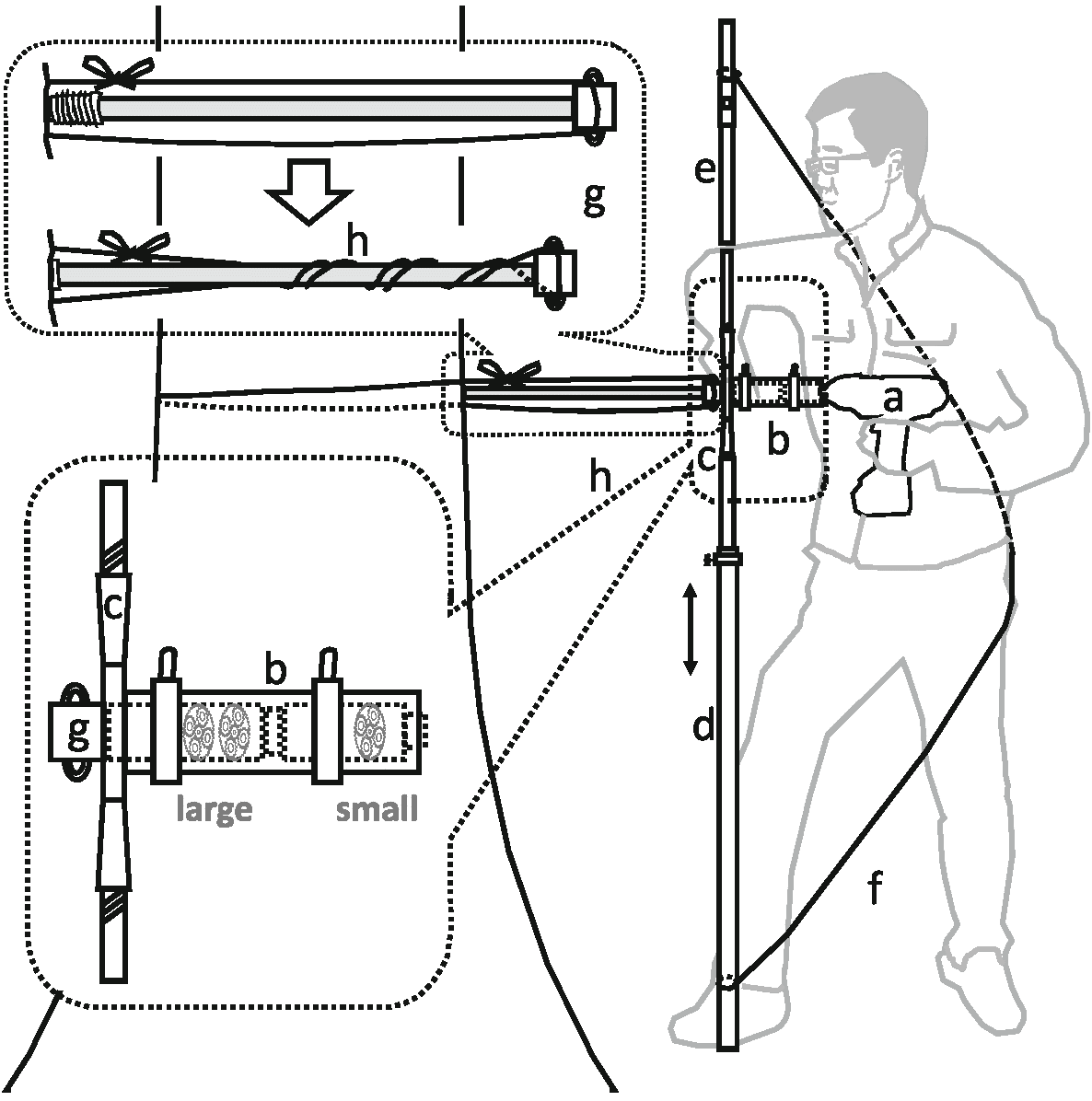 Fig. 2 General view of the smart increment borer. a Power wrench, b gear box, c reaction bar, d expandable bar, e handle of increment borer, f rope to support reaction force, g winch socket, and h increment borer. The depicted configuration is for the sampling of 12 mm cores. Winch socket can start an increment borer by pressing the cutting edge of increment borer against the stem surface (top left). The gearbox can contain large and small planetary gears, and is able to shift the gear ratio from 1:5 to 1:118 (bottom left). |
[ soil ]
Soil measurements (土壌測定)Shovel/scoop (シャベル/スコップ)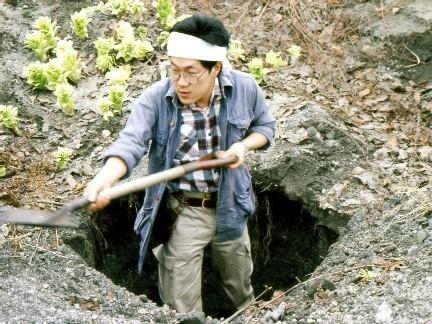 The quality of these tools determines the effectiveness of belowground survey. Also bring a pickax if the shovels do not work. If the pickax does not work, consider power shovel (yumbo) and/or blasting.
The quality of these tools determines the effectiveness of belowground survey. Also bring a pickax if the shovels do not work. If the pickax does not work, consider power shovel (yumbo) and/or blasting.
Difference between shovel and scoopshovel > scoop > spoon
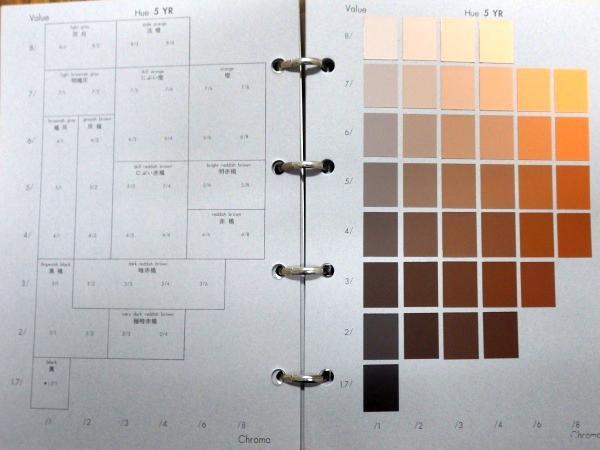
Soil color chart (土色帳)Munsell soil color chartRevised standard soil color charts: Munsell chart adopted to Japan Consisting of:
Hue: the wavelength of the color 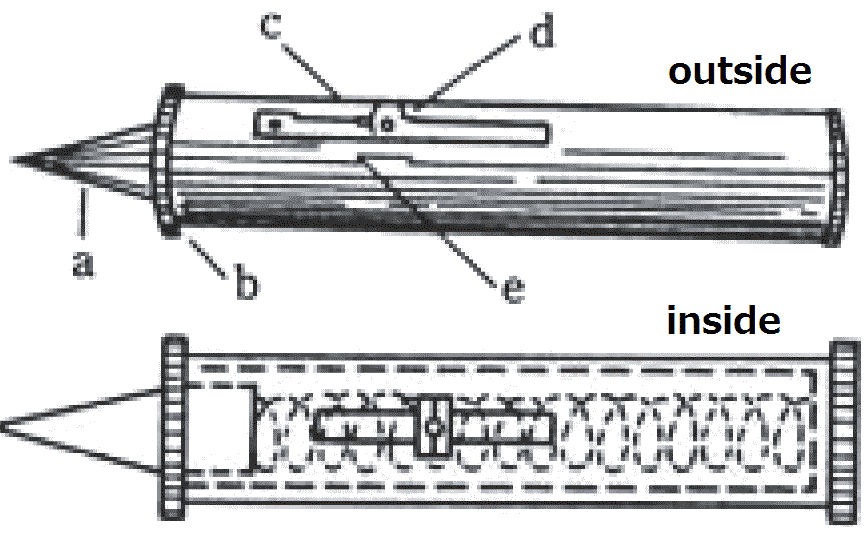 Yamaoka-typed soil hardness tester (山岡式土壌硬度計) 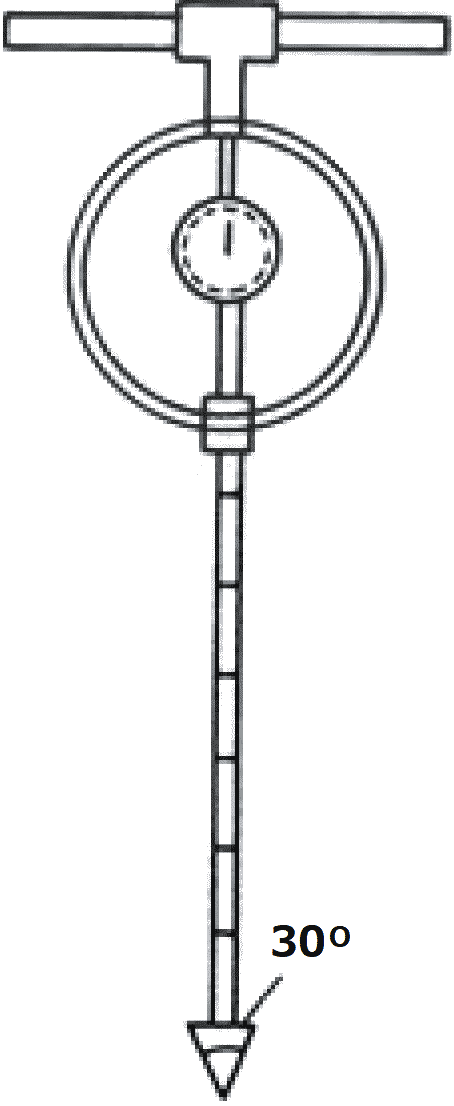
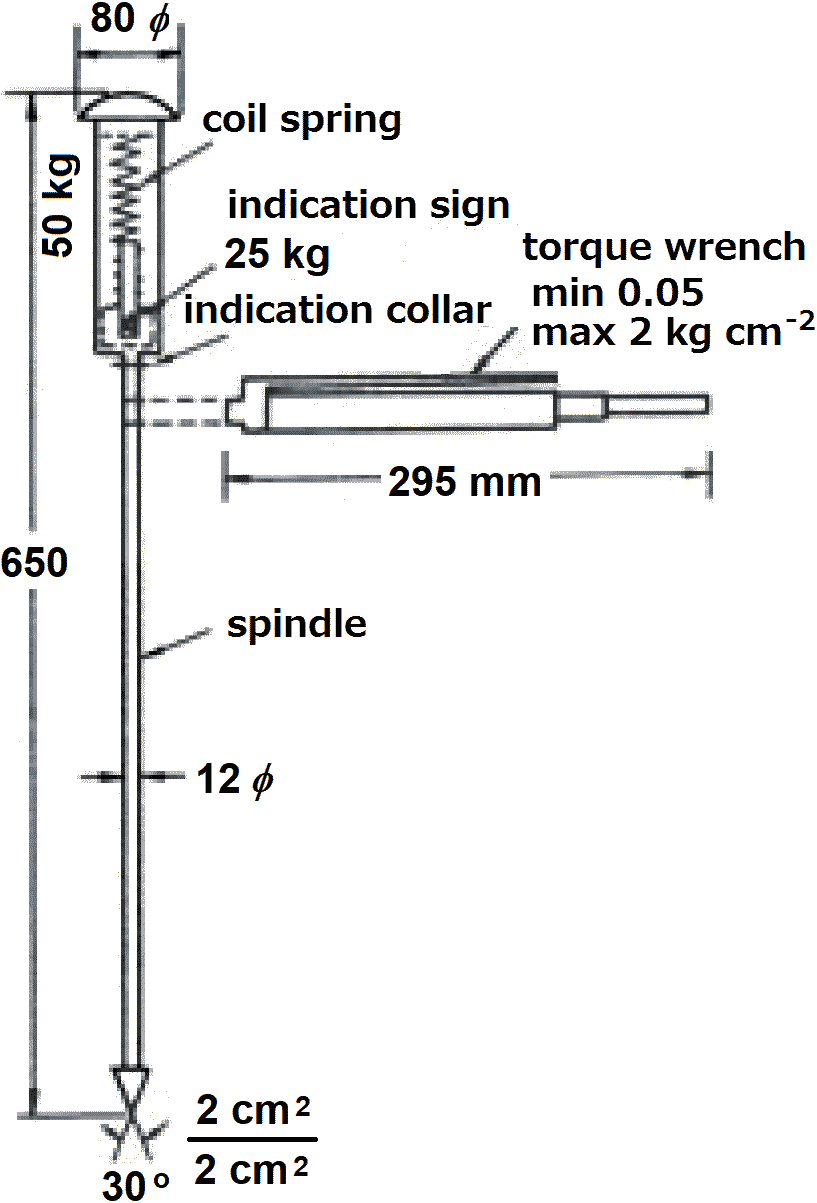 Cone penetrometer___Instrument for measuring soil resistance ___________________(土壌抵抗測定器) |
Peat (泥炭)Peat corer or sampler (泥炭サンプラー)Table. Equipment available for coring peat
Problems on the measurements of belowground
excavation
Demerits: water-culture or transparent pot culture
Demerits: (mini)rhizotron (Bartz Tech., USA) (Strand et al. 2008) ⇔ CI-600 soil profile scan system (CID, USA) - convenient price scanner 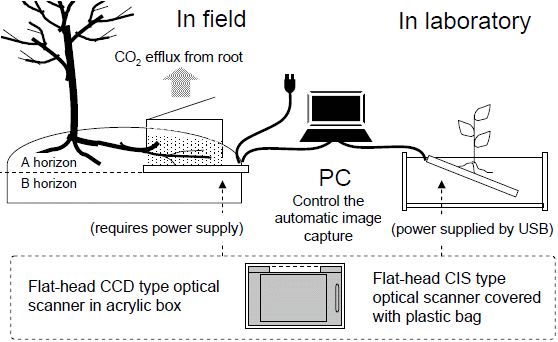 Fig. 1. The scanner system for observing belowground systems (Dannnoura et al. 2008). Minirhizotron uses transparent tubes and a fiber scope instead of a scanner. [Note] Battery for scanner: must be higher than 13.5V to avoid emsssion and color unevenness (recommendation ≈ 16V of lithium cell) Analysis: a few softwares
|
Preparation for ANWR reserachSuggested personal equipment list for Tundra Ecosystem and Permafrost Dynamics Group trip to Arctic National Wildlife Refuge (31 July to 7 August 2006)
|
Extras not essential but often nice to have:
Light weight pair of camp shoes or sandals to get out of wet hiking boots and change to dry socks in evening at base camp Project Equipment to support the entire group:
Camp stoves (2) small, light weight and fuel (about 5 quarts) Names of participants for ANWR field work
Masami FUKUDA. Prof. Hokkaido University |
MaintenanceSystematic processes aimed at ensuring the reliability, safety and longevity of equipment, facilities or systems to help prevent failures, reduce downtime and optimize performancePurposeEnsure proper operation of assets and systemsExtend service life and reduce wear and tear Minimize unplanned downtime and costly failures Improve safety and compliance with regulations Optimize performance and energy efficiency Types of MaintenanceRoutine/Preventive: Regular checks and servicing to avoid breakdownsCorrective: Repairs after faults are detected Predictive: Using diagnostics to anticipate failures before they occur Planned: Scheduled interventions based on usage or time intervals Inspectionthe process of examining equipment, systems or structures to assess their condition, detect anomalies and verify compliance with standardspreceding maintenance and informs decision-making |
PurposeIdentify wear, damage, or defects earlyEnsure safety and regulatory compliance Support maintenance planning by providing diagnostic data Prevent accidents or failures through early detection Document asset condition for audits or insurance Nuisance wildlife control (害獣防除)DeerPhysical barriers (non-electric)- high fencing (minimum 2 m)Fishing line grid Brush or natural barriers Repellents (non-toxic, long-lasting) Egg-based spray (putrescent egg solids) Soap bars or scented sachets Capsaicin or garlic-based products Psychological deterrents Visual scare devices Motion-triggered devices |